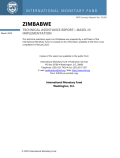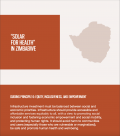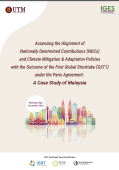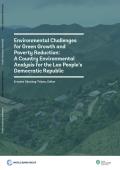This study assesses and analyses the ‘user cost’ and ‘net price’ methods of calculating the value of natural resource depreciation, thereby contributing to the continued quest for the most appropriate way to incorporate the degradation of natural capital into national income accounting procedures. On the basis of this assessment, the net price method is used to adjust the national accounts of Zimbabwe for depletion of forests, soils, and mineral resources, for the period 1980 to 1989.
While net product is often derived by deducting the depreciation of only man-made capital from gross product, deducting depreciation of natural capital in a similar manner will give a figure for ‘true’ net product, which provides a better indicator of that level of current income. This study suggests that a theoretically correct and practically feasible method of providing such a measure is by deducting the rents derived from resource exploitation, valued by the ‘net price method’.
The results suggest that, for Zimbabwe, economic depreciation of natural resources represents approximately 2 percent of annual GDP, although this is likely a considerable underestimate. Omitting degradation and depreciation of the country’s natural capital often leads to national income figures that overestimate net investment within the economy, thereby justifying current consumption at the expense of future income. The authors anticipate that providing an adjusted net product would encourage the implementation of policies to enhance economic growth without extensive natural resource depletion, thereby achieving levels of income that are more sustainable. They discuss the specific implications on the forestry, agriculture, and mining sectors in Zimbabwe.




